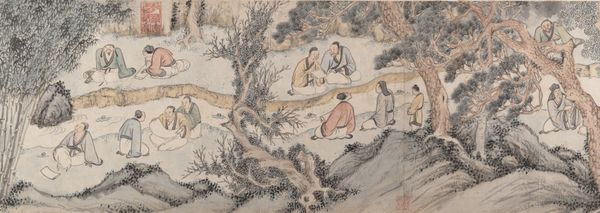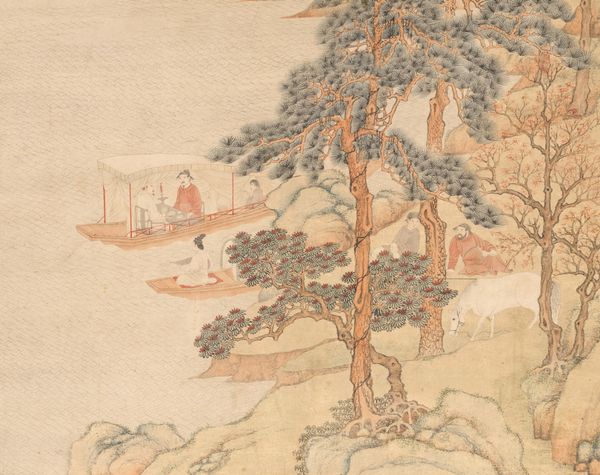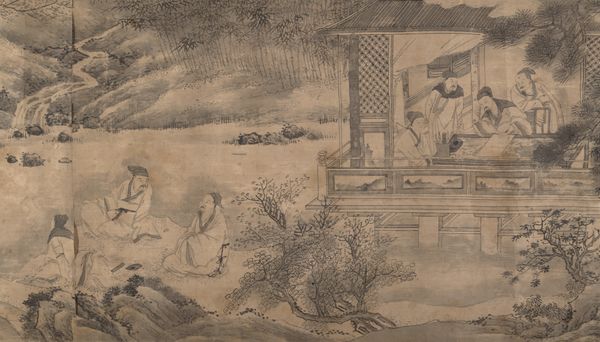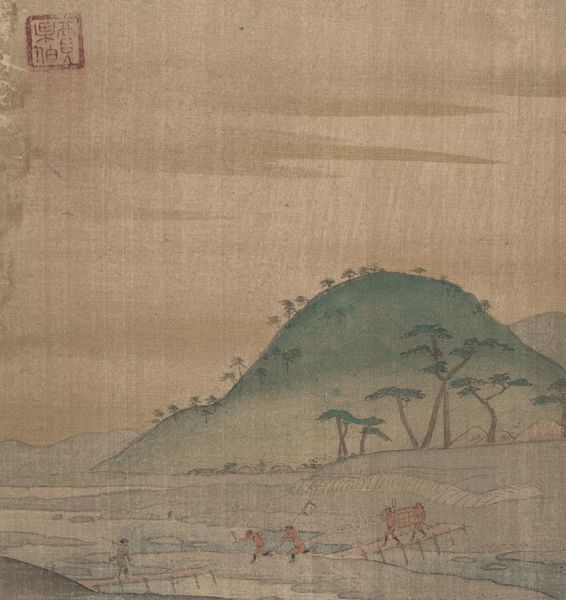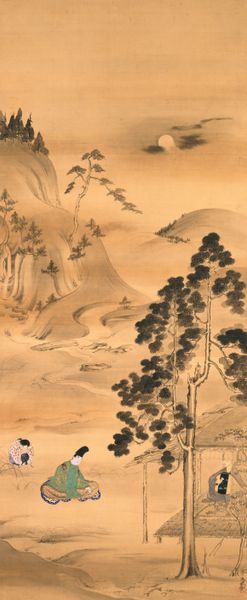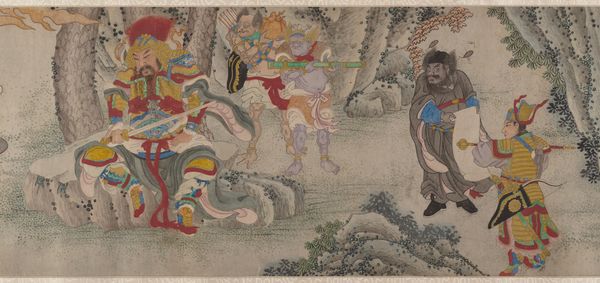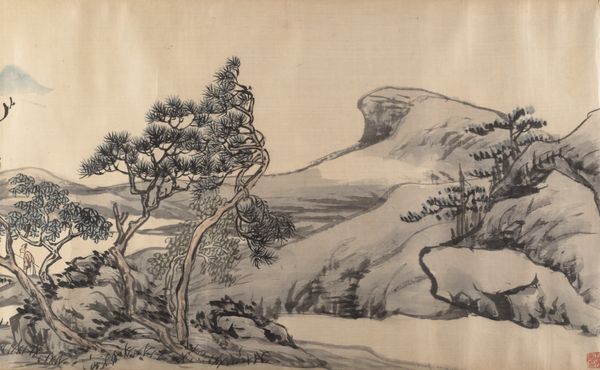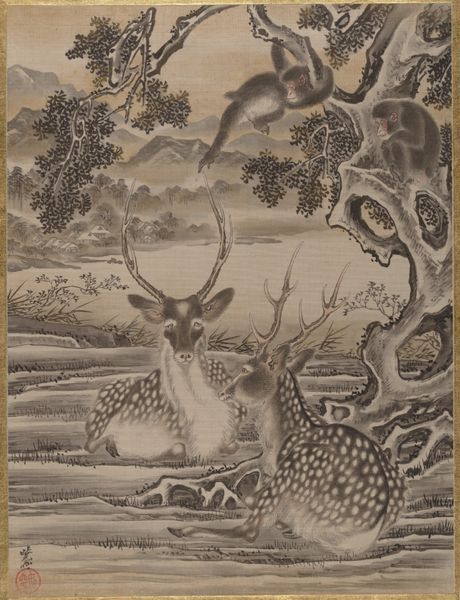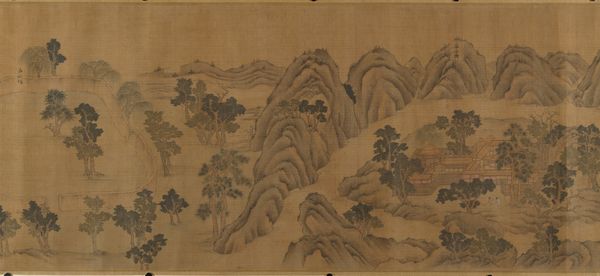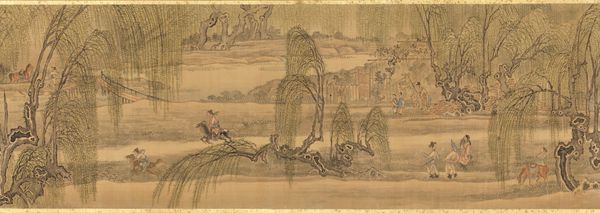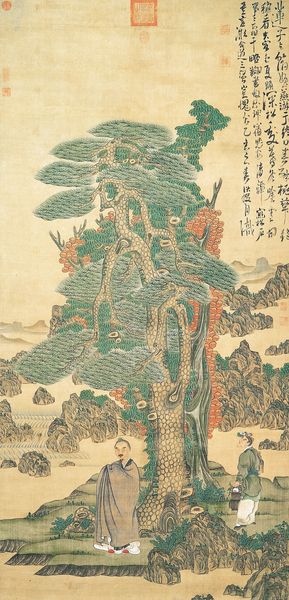
Monkeys Watching a Praying Mantis Catching a Wasp c. 18th century
0:00
0:00
painting, paper, watercolor, ink
#
water colours
#
painting
#
asian-art
#
landscape
#
ukiyo-e
#
japan
#
figuration
#
paper
#
watercolor
#
ink
#
coloured pencil
#
orientalism
#
genre-painting
#
mixed media
Dimensions: 24 × 38 7/16 in. (60.96 × 97.63 cm) (image)61 3/16 × 42 3/4 in. (155.42 × 108.59 cm) (mount, without roller)
Copyright: Public Domain
Curator: Immediately, I'm struck by the stillness, a pregnant pause before… something. It feels like the anticipation is almost palpable. Editor: I see that too! This is "Monkeys Watching a Praying Mantis Catching a Wasp," a piece made around the 18th century by Iwai Kōdun. The artist uses ink and watercolor on paper to depict this scene of heightened drama. Curator: The colors are muted, almost monochromatic, lending a kind of dreamlike quality. And those monkeys, posed as observers. Makes you wonder about their role, you know? Are they just curious, or is there something more sinister going on? Editor: That's a fascinating point. Consider the socio-political context. During the Edo period, there were strict hierarchical structures. Perhaps the monkeys symbolize the watching, waiting masses, and the insect struggle a commentary on power dynamics. Curator: Ooh, I like that. A miniature epic unfolding right there! But beyond that, I'm drawn to the sheer dynamism Kōdun captures in such a subtle way. Editor: The choice of such delicate media is compelling here. The transparency of watercolor layered with ink makes me consider ephemerality. Life is brief for the wasp. And even for societies and systems... everything passes. Curator: Right. It also adds a layer of vulnerability to the scene, like we're peeking into a fragile ecosystem. It also raises the question: What are we watching? Editor: Precisely! And what does our voyeurism signify? Is there an ethical component to artistic engagement? Curator: Well now, you're making me hungry for answers. But perhaps the point *is* the questions... the delicious ambiguity! Editor: Perhaps the power resides not just within the composition but also in its capability to trigger reflection long after the encounter, encouraging discussions about power and impermanence across time. Curator: Exactly! So, next time you find yourself feeling too powerful, remember these little monkeys. And wasps. Editor: Indeed, there’s always someone, or something, watching and waiting for their turn. Thank you for sharing your thoughts.
Comments
minneapolisinstituteofart almost 2 years ago
⋮
Nothing is known about the painter Iwai Kōun except that he was born in Nagasaki, the only port town in Japan that allowed foreigners to trade and live there during the Edo period (1603–1868). Nagasaki paintings reflect the strong influence of Chinese art, which arrived there on merchant ships. On the right side of this painting, a praying mantis has caught a wasp and is about to kill it. A monkey in the tree above watches the spectacle, while he is observed by another monkey on the far left.
Join the conversation
Join millions of artists and users on Artera today and experience the ultimate creative platform.

